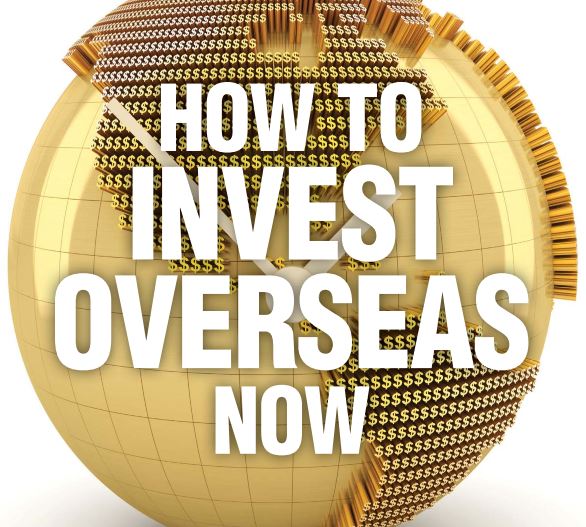How to Invest in Overseas Market

Mostly Indian investors happy to investing in domestic markets and avoid to invest in oversea market only few are enthusiasts and know the potential of the global markets, led by the US, surging during the post-pandemic recovery, investors were attracted towards them, both for returns and diversification benefits. During this period, certain domestic mutual funds, led by Parag Parikh Flexi Cap Fund, that maintained a steady international exposure provided superior returns. This also helped increase interest in the Indian investor about overseas investing.
There are 3 major way to invest in foreign market for India citizen : –
- Indian International Mutual Fund
- Directly with Foreign Brokers
- GIFT City Way
Via International Mutual Funds : –
The most convenient route for investing overseas is international mutual funds. These funds helps million of investor to easy entry in foreign stock and provide professional expertise, instant diversification and ease of operation. These funds help investors to gain exposure not just to US equities but also to other geographies, such as Japan, Europe, China, etc.
International funds are the best way to invest overseas for a majority of investors. They don’t entail the hassles of direct overseas investing. That means you don’t need a separate account and hence there is no additional paperwork. You can invest in them just like you would invest in any other fund. You invest in Indian rupees only and the currency conversion is taken care of by the AMC. Institutions get better rupee conversion rates than individual investors do, so that’s an added advantage.
Further, you don’t have to worry about any LRS limits. There are no transfer charges. Buying and selling is easy, as you would do in any other fund. The only cost involved is the fund’s expense ratio.
Via Foreign Brokers : –
You can invest in overseas equity by opening an account with a foreign broker, such as Interactive Brokers and Saxo Bank. You can either approach the foreign broker directly or through an Indian broker or fintech firm that has a tie-up with a foreign broker. Indian bro- kers like ICICI Direct, HDFC Securities and Kotak Securities facilitate investing in US stocks. Both ICICI Direct and Kotak Securities have a tie-up with Interactive Brokers. HDFC Securities has a tie-up with Stockal. The web- sites of these Indian brokers answer most of the things that you would like to know about these direct accounts.
Via GIFT City : –
First of all you have to know What is GIFT City. Gujarat International Finance Tech (GIFT) City is a global financial and IT services hub which is being developed in Gandhinagar, Gujarat, to provide financial services to non-residents and resident Indians.
What is GIFT IFSC ?
Operationalized in April 2015 by the Indian government, International Financial Services Centre (IFSC) at GIFT City aims to make India a hub of international financial transactions, majority of which currently happen outside India. It plans to do so by providing a liberal tax regime for 10 years and a strong regulatory and legal environment, with an international dispute- resolution mechanism through Singapore International Arbitration Centre. Though the initial objective of GIFT IFSC was to provide a platform for getting investments into India, it has been further extended to facilitate resident Indians to invest overseas. The International Financial Services Centres Authority (IFSCA), established in April 2020 under the IFSCA Act, 2019, is a unified authority for the development and regulation of financial products, services and institutions in IFSCs.
NSE IFSC : –
NSE IFSC is currently testing out the investment process in an ‘innovation sandbox’ environment, initiated in March 2022, for a duration of nine months with the number of investors limited to 10,000. Rather than owning direct shares, here you invest/trade in NSE IFSC receipts, which are nothing but ‘unsponsored’ depositary receipts (DRs). These DRs are issued in a ratio such that they represent the ownership of one under- lying share of a particular US stock. For example, 50 DRs of Apple are equivalent to holding one share in the company. Thus, through DRs, one can invest in the fraction of a share. These DRs can be traded exclusively on NSE IFSC. HDFC IFSC Banking Unit (IBU), which has been appointed as the custodian in the current sandbox environment, will be creating the DRs. In turn, HDFC IBU has appointed Deutsche Bank AG, New York branch, as the US custodian. Whenever you buy NSE IFSC receipts on the exchange, HDFC IBU will instruct the US custodian to own the underlying shares as underlying assets. The US custodian will maintain a pooled account for holding these underlying shares. It will not maintain separate accounts for each of the receipt holders.
NSE IFSC receipts will be traded in US dollars. They will be issued and governed as per the Indian law and will not be registered with, or governed by, the US Securities and Exchange Commission (SEC). However, the US custodian is regulated and authorised to pro- vide custody services to its counterpart HDFC IBU by the SEC and other US-based regulatory mechanisms.
What is the Process to invest in overseas market : –
All the transactions on the exchange are facilitated by brokers the same way you trans- act in other Indian securities. To get started:
1) Open your trading and demat account with an NSE IFSC registered broker.
2) Transfer funds from your Indian bank account to NSE IFSC registered brokers’ bank account.
3) Once the funds are credited to your broker’s account, you can invest in US stocks through NSE IFSC receipts.
4) The settlement cycle is T+3 (trading day plus three days). This means that receipts bought and held overnight can be sold only after three days and money from the sale will be available for use only after three days.
Currently, NSE IFSC has 34 registered brokers. In the sandbox phase, only 50 select US stocks have been permitted for which the DRs can be issued and traded. Since NSE IFSC receipts are new financial instruments, main- training liquidity for fair price discovery would be crucial. For this reason, brokers and other market intermediaries are currently being incentivized for ensuring liquidity and generating investor interest in securities which have limited trading activity.
India INX Global Access
INXGA empanels multiple international brokers, such as Interactive Brokers, Sova Capital, EDF Man Capital, etc., that facilitate investing overseas. Its platform provides a free-of-cost single integrated terminal and a mobile application through which you can invest directly in equities and ETFs traded over 135 exchanges across 33 countries in 23 currencies. It covers global exchanges in America, Europe, Asia Pacific and Africa.
To get started:
- Send an email to [email protected], which will then send the client-onboarding link to you.
2) Register for an account digitally.
3) Transfer money to your account.
4) Start trading.
Costs involved in the direct channels : –
- Remittance cost
- Impact of Currency Conversion
- Brokerage Cost
- Compliance cost may be
Taxation and compliance in the direct channels : –
Under the Liberalised Remittance Scheme (LRS), you can transfer overseas up to $250,000 (about `1.9 crore as per the current exchange rate) in a financial year. If you transfer more than `7 lakh, tax at the source is collected at 5 per cent. You can get it adjusted at the time of filing the income-tax return. If you hold foreign equity assets for more than 24 months, they are treated as long-term capital assets and the gains on sale of such assets are taxed at 20 per cent with the indexation benefit.
For a shorter holding period, they will be treated as short-term capital assets and the gains are added to your income for taxation. You are subject to a withholding tax of about 25 per cent on the dividends paid out by US companies. You can claim an equivalent foreign tax credit in India while filing the ITR and only pay the balance, if any. If the investor passes away, his assets in the US may be subject to an inheritance tax, which could be as high as 40 per cent of the ‘full’ value of the assets, i.e., cost plus gains.
So, what is the right way for you?
For the more enterprising investor who is willing to bear the hassles of investing overseas directly, two options have been discussed above. If you decide to go by this route, maintaining proper records, hiring professional help and keeping the overheads in check will be important. For most investors who just want to diversify their portfolio overseas and also get expo- sure to the world’s top names, international mutual funds remain the best option. But unfortunately, these funds are no longer readily available for investment. Until now, AMCs had stopped fresh inflows, anticipating a breach of the foreign investment limits earlier this year. However, now they have also started to pause existing SIPs, as Motilal Oswal AMC did with three of its international funds from April 2022.
Note : – This article and images fetched from Mutual Fund Insight Magazine of Value Research Company.


